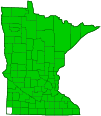American basswood
(Tilia americana var. americana)
Conservation • Wetland • Description • Habitat • Ecology • Use • Distribution • Taxonomy
Description |
||
American basswood is a fast-growing, deciduous, hardwood tree. It rises on a single or often two or more stems, usually from suckers. In Minnesota mature trees are usually 50′ to 70′ tall and up to 36″ in diameter at breast height. Large individuals can reach 90′ in height. It is a long-lived tree, often surviving over 200 years. The trunk is straight and is distinct into the upper part of the crown. There are often suckers growing at the base of the trunk. The crown is relatively small, symmetrical, smooth, and rounded. The branches are ascending and arching, with tips ascending. When struck lightly with the handle of a tool the trunk sounds hollow. The bark on young trees is thin, smooth, and light gray. As it ages it becomes moderately thick, dark grayish-brown, with deep, V-shaped fissures and long, narrow, flat-topped, scaly, vertical ridges that are transversely divided into short blocks. The twigs are moderately stout, zigzagged, and hairless. They are deep green in the first season, becoming deep red in the winter, and light grayish-brown in the second year. The buds are green or red, 3 ⁄16″ to ¼″ long, oval, shiny, and hairless. They have 2 bud scales. There are no terminal buds. The leaf scars are half-oval with 5 to 10 bundle scars. The leaves are deciduous, alternate, and not lobed or divided (simple). They are thin, broadly egg-shaped to nearly circular, 3″ to 6″ long and 2″ to 5″ wide. They are on 1″ to 2¾″ long leaf stalks. The blades taper abruptly at the tip to a sharp point with concave sides along the tip. They are heart-shaped and unequal at the base. The upper surface is dark green and hairless. The lower surface is paler green and hairless except for tufts of brown hairs in the leaf axils. The margins are coarsely toothed, the teeth sharp and forward pointing with elongated tips. In autumn they turn yellow to orange. Leaves on suckers are often much larger. Flowers have both male and female parts. They appear after the leaves in early July to early August and last two weeks. They are borne in loose, many-branched clusters (cymes) of 4 to 40 flowers drooping from leaf axils. The clusters are on a stalk that is fused for about half its length to a to a leaf-like bract. The bract is yellowish, spatula shaped, 2″ to 4″ long, and gracefully curved. The individual flowers have 5 hairy sepals, 5 greenish-yellow to white petals, and about 60 stamens, and are fragrant. The fruit is a light brown or gray, spherical, hard, nut-like drupe, ¼″ to ⅜″ in diameter. It is finely hairy and has a sharp-pointed tip. It matures mid-August to mid-September. When the basswood seed sprouts the seed leaves, the first pair of leaves to appear above ground (cotyledon leaves), are palmately five-lobed. |
||
Height |
||
50′ to 70′ |
||
Record |
||
There are three co-champion American basswoods in Minnesota. One is on private property near New Germany, in Carver County. In 2018 it was measured at 65′ tall and 228″ in circumference (72½″ in diameter), with a crown spread of 47′. One is on private property near Buffalo, in Wright County. In 2018 it was measured at 67′ tall and 222″ in circumference (70½″ in diameter), with a crown spread of 52′. One is on private property near Mora, in Kanabec County. In 2018 it was measured at 95′ tall and 193″ in circumference (61½″ in diameter), with a crown spread of 50′. |
||
Flower Color |
||
Greenish-yellow to white |
||
Similar Species |
||
Littleleaf linden (Tilia cordata) leaves are much smaller, 1½″ to 2½″ long. It is a European species often planted on city boulevards. It is not naturalized and is not found in the wild. |
||
Habitat |
||
Moist to moderate moisture. Deciduous forests, alluvial plains not subject to repeated long-duration spring flooding. Often on moist, northeast-facing slopes. |
||
Ecology |
||
Flowering |
||
Early July to early August |
||
Pests and Diseases |
||
Red nail gall mite (Eriophyes tiliae) creates raised, finger-like galls on the upper leaf surface. Linden wart gall midge (Contarinia verrucicola) creates round, wart-like or beebee-like galls, each one raised on both the upper and lower leaf surfaces. |
||
Use |
||
|
||
Distribution |
||||
|
Sources |
|||
| 2/8/2023 | ||||
Nativity |
||||
Native |
||||
Occurrence |
||||
Common |
||||
Taxonomy |
|||
| Kingdom | Plantae (Plants) | ||
| Division | Tracheophyta (Vascular Plants) | ||
| Subdivision | Spermatophytina (Seed Plants) | ||
| Class | Magnoliopsida (Dicots) | ||
Order |
Malvales (mallows, rock-roses, and allies) | ||
Family |
Malvaceae (mallow and Hibiscus) | ||
| Subfamily | Tilioideae (linden) | ||
| Genus | Tilia (lindens) | ||
| Species | Tilia americana (basswood) | ||
Subordinate Taxa |
|||
|
|||
Synonyms |
|||
Tilia americana var. neglecta Tilia glabra Tilia neglecta Tilia palmeri Tilia truncata Tilia venulosa |
|||
Common Names |
|||
American basswood American lime American linden basswood linn white basswood |
|||
Glossary
Alluvial
Describing a relatively flat area created over a long period of time by the repeated deposit of sediment from periodic flooding of one or more streams or rivers.
Axil
The upper angle where a branch, stem, leaf stalk, or vein diverges.
Bundle scar
Tiny raised area within a leaf scar, formed from the broken end of a vascular bundle.
Cyme
A branched, flat-topped or convex flower cluster in which the terminal flower opens first and the outermost flowers open last.
Drupe
A fleshy fruit with a single hard, stone-like core, like a cherry or peach.
Simple leaf
A leaf that is not divided into leaflets, though it may be deeply lobed or cleft.
Sucker
A basal shoot rising from the roots or from a bud at the base of a shrub or tree.
Visitor Photos |
|||||
Share your photo of this plant. |
|||||
| This button not working for you? Simply email us at info@MinnesotaSeasons.com. Attach one or more photos and, if you like, a caption. |
|||||
Randy |
|||||
Basswood foliage, Freeborn County, MN, August 2017 |
|||||
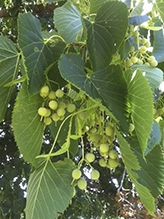 |
|||||
Basswood nutlets, Freeborn County, MN, August 2017 |
|||||
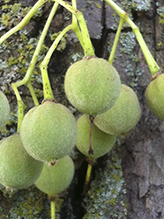 |
|||||
Larger leaf on a basswood sprout, Freeborn Co., MN, May 2017 |
|||||
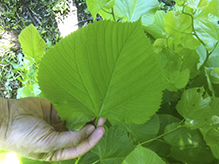 |
|||||
Freshly fallen American Linden near MN/IA border |
|||||
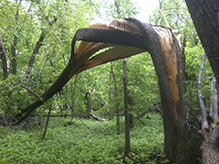 |
|||||
Basswood, Rice County, MN, October 2016 |
|||||
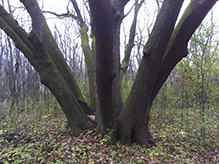 |
|||||
MinnesotaSeasons.com Photos |
|||||
Tree |
|||||
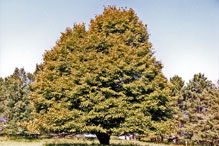 |
|||||
Leaves |
|||||
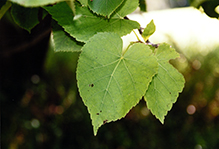 |
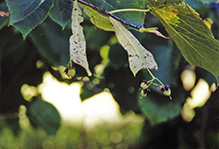 |
||||
Bark |
|||||
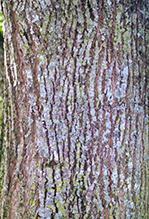 |
|||||
Cotyledon Leaves |
|||||
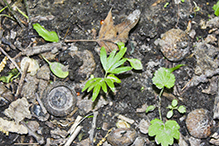 |
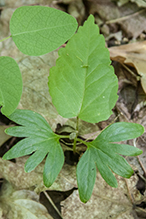 |
||||

Slideshows |
||
| American Linden J.Steinbock |
||
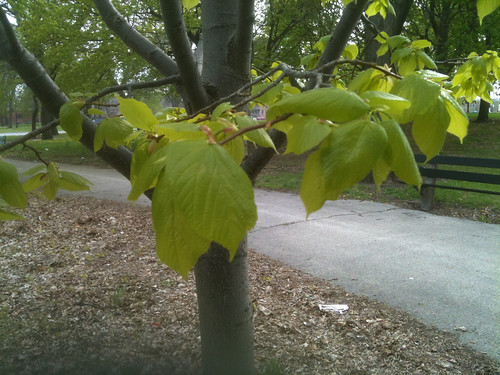
|
||
| Tilia americana - American Basswood Virens (Latin for greening) |
||

|
||

Visitor Videos |
|||
Share your video of this plant. |
|||
| This button not working for you? Simply email us at info@MinnesotaSeasons.com. Attach a video, a YouTube link, or a cloud storage link. |
|||
Other Videos |
|||
| American Basswood tubesoleum |
|||
About
Uploaded on Jul 23, 2010 Tilia Americana. Arnold Arboretum, Boston. July 2010. |
|||
| Basswood Fruit Taste Test MiWilderness |
|||
About
Uploaded on Aug 1, 2011 Tasting the fruit of the Basswood tree, Tilia americana. |
|||
| Trees with Don Leopold - American basswood ESFTV |
|||
About
Published on Apr 4, 2012 No description available. |
|||
| Basswood Tree Identification Video Response to Leaf Life Bushcraft MiWilderness |
|||
About
Published on Mar 27, 2013 Winter tree identification of basswood, Tilia americana. Basswood provides food, fire, shelter, and medicine making it one of my favorite trees. This is a video response to Craig's contest here: http://www.youtube.com/watch?v=kZHkr23ilP0 Thanks Craig! This wild edible plant video explains a bit more about basswood: http://www.youtube.com/watch?v=EP0zWL6p-oQ More shrub and tree identification videos: http://www.youtube.com/watch?v=EnRZog-vvno&list=PL69BBBB171107F34B www.facebook.com/michigan.wilderness www.twitter.com/MiWilderness Thanks for watching, subscribing, and supporting this channel. If you like this video please give a thumbs up and share it with others. If you have any questions or tips please leave a comment. |
|||
| Edible Tree Buds Basswood MiWilderness |
|||
About
Published on Mar 10, 2012 Eating Basswood leaves: http://youtu.be/v69QDpgUFuY I hope you like it. Being both edible and medicinal, basswood tree buds are a good winter food source. Low hanging branches are typically found making harvest quick and easy. The plump red alternating buds of basswood have a tender and moist texture like okra or aloe vera with a mucilaginous quality that coats and soothes the throat. Also, the leaves, flowers, cambium inner bark layer, and seed scan all be eaten. The seeds were reportedly used to make a chocolate substitute. The flowers can be used to make a refreshing tea which is also considered to be an herbal remedy. The shiny young leaves can be harvested in abundance and taste excellent raw and in salads. I consider basswood leaves the iceberg lettuce of the forest although it likely has far more nutrients and energy. There are many more bush craft, survival, and every day uses for basswood. The fibrous inner bark can be used to make large ropes, but it's rather weak as small diameter cordage. The rope was once used for rigging on ships as the fibers were both long, abundant and strong when twisted into large diameter. The lightweight wood has a non-distinct grain which is excellent for woodworking and carving. It one of the best woods for use in friction fire requiring very little pressure and speed compared to other woods like cedar, autumn olive and box elder. Bees use the pollen to make a high grade of honey. The genera for this plant is Tilia and there are several varieties of basswood. Depending on your geographic location they are commonly called basswood, linden or lime trees. More plant videos: http://www.youtube.com/playlist?list=PL69BBBB171107F34B Thanks for watching! Tags: Tree "outdoor sports" Flower Green basswood tilia linden lime "tree identification" "useful trees" wood carving "wood working" cordage rope "herbal medicine" remedy medicinal woodland hiking camping hunting fishing "bush craft" "survival skills" "wild edible plants" pioneer aboriginal "primitive technology" "paleo diet" "health food" garden permaculture "wild crafting" "gear review" "field test" honey maple syrup sap "wild salad" chocolate tea |
|||

Visitor Sightings |
|||||
Report a sighting of this plant. |
|||||
| This button not working for you? Simply email us at info@MinnesotaSeasons.com. Be sure to include a location. |
|||||
| Randy August 2017 |
Location: Freeborn County, MN Basswood nutlets |
 |
|||
| Randy 5/26/2017 |
Location: Freeborn Co., MN Larger leaf on a basswood sprout |
 |
|||
| Randy 5/23/2017 |
Location: near MN/IA border Freshly fallen American Linden |
 |
|||
| Randy October, 2016 |
Location: Rice County, MN |
 |
|||
MinnesotaSeasons.com Sightings |
|||||
Avon Hills Forest SNA, North Unit Bertram Chain of Lakes Regional Park Beaver Creek Valley State Park Cannon River Turtle Preserve SNA Carpenter St. Croix Valley Nature Center Charles A. Lindbergh State Park Clifton E. French Regional Park Clinton Falls Dwarf Trout Lily SNA Forestville/Mystery Cave State Park Hardscrabble Woods / MG Tusler Sanctuary John Peter Hoffman Spring Brook Valley WMA Lake Alexander Woods SNA, South Unit Mary Schmidt Crawford Woods SNA Mary Schmidt Crawford Woods SNA Minnesota Valley NWR, Chaska Unit Minnesota Valley NWR, Long Meadow Lake Unit Minnesota Valley NWR, Louisville Swamp Unit Minnesota Valley NWR, Rapids Lake Unit Minnesota Valley State Recreation Area, Lawrence Unit Nerstrand Big Woods State Park P.N. and G.M. Nelson Wildlife Sanctuary Prairie Creek WMA, Koester Prairie Unit Robert Ney Memorial Park Reserve Stanley Eddy Memorial Park Reserve |
|||||

|
Created: Last Updated: © MinnesotaSeasons.com. All rights reserved. |
